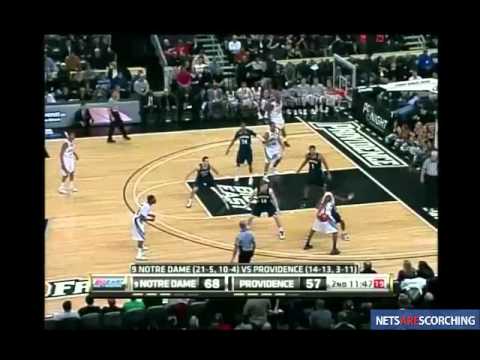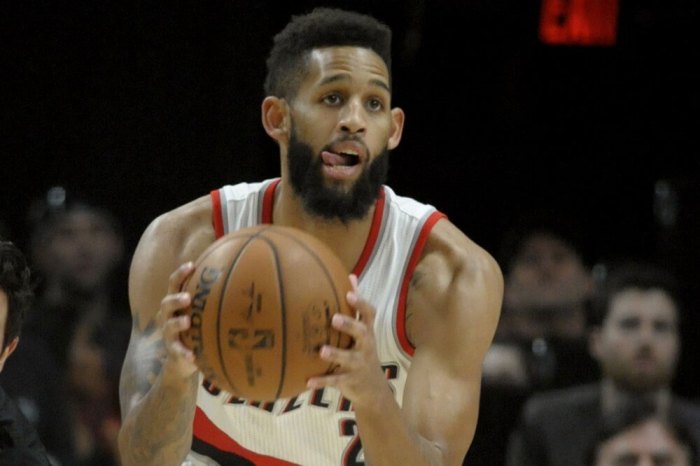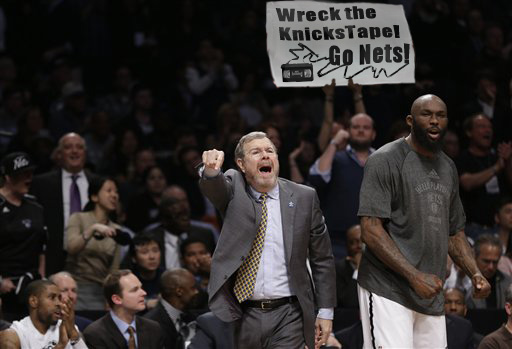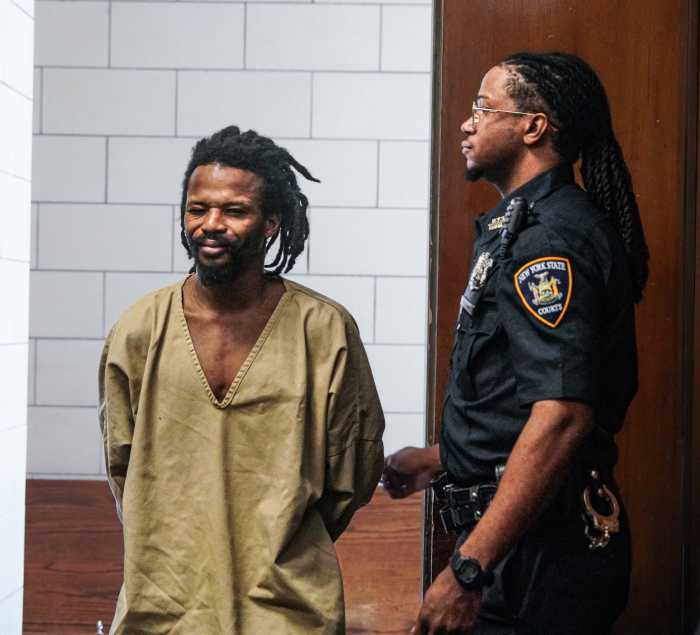
Despite being a four-year senior in a power conference, Marshon Brooks is still a bit of an unknown. He played for small-time Providence College and didn’t develop into a serious NBA prospect until this past season. However, after averaging 24.6 points per game and a number of killer workouts in the draft process, Brooks went into the draft with a ton of buzz.
Some mocks had him as high as the late lottery, but few had Brooks falling to 25 – and when he did, the Nets pulled the trigger on a deal to pick him up. But who exactly did they trade for?
On Offense
Even for a senior at the college level, Brooks is a very advanced scorer, showing excellent footwork, a high, consistent release, and a variety of different scoring moves.
Due to the lack of polished scorers at Providence, Brooks created much of his offense in isolation, seeing a staggering 29.5% of his plays on Iso Island. He’s more comfortable going left, showing a solid ability to get to the basket from the left side, while he’s more adept at pulling up for the jumper going right.
Isolation by definition is a low-efficiency play, and his skills there translate to a limited offensive output. Brooks only shot 38.8% in isolation, and while that’s a good mark for an isolation player, it’s not conducive to team success. Still, plays in the NBA will inevitably break down, and you want a player that can give you the best chance possible to score when he’s only allowed to rely on his own skills. In that sense, he’s exactly what a team wants.
Brooks is arguably at his best when the offense is flying up the floor. As soon as the Friars secured the ball on defense, he was often the first man out, sprinting in an attempt to beat the defense for an easy bucket. Providence’s offense was the eighth-fasted in the NCAA, averaging 72.7 possessions per game. When the team got out and ran, Brooks created many good looks and converted a number of dunks and layups in transition, scoring an efficient 1.23 PPP when on the break.
If he and Deron Williams can develop a rapport on the fast break, the Nets should improve even more dramatically in transition than I predicted before the draft.
Brooks is supremely confident in his scoring ability – often to a fault. While it’s true that he was the best scorer on his team by leaps & bounds, scratching his scoring itch often translated into a number of low-percentage, unnecessary shots with enough time on the shot clock to get a better look. While he’ll be surrounded by legitimate offensive threats in the NBA, altering a scorer’s mentality is difficult, and he’ll likely struggle with shot selection early on in his career.
Despite the occasional urge to J.R. Smith an offense, Brooks can do it all. He can score in transition and in the half-court. He can spot up from deep and find smart cuts to the basket. He uses off-ball screens well, and he’s excellent at taking advantage of other guards – despite his average height, Brooks’s massive wingspan and heady offensive play allow him to convert a number of put-backs and post-ups around the basket. He isn’t much of a passer, but he can occasionally find the open man.
Another skill Brooks excels at is creating space for himself. He is rarely blocked on jumpers or floaters, as his high release and quick pivots leave defenders off-balance and unable to get a hand in his face. Even when his shots are of poor quality, he is at least able to pull a clean look out of his bag of tricks. In the first video, there are a few examples of that.
While his numbers don’t indicate a knock-down shooter, it’s important to note opposing defenses often had to plan their entire defensive scheme around stopping him. This meant that he saw very few unguarded jumpers. On the rare occasions that a defense left him open, Brooks made them pay dearly, knocking down 59% of his shots with an outstanding adjusted FG% of 85.2%. I don’t think he’ll be Anthony Morrow, but he also won’t be Antoine Walker.
With Deron Williams and Brook Lopez shouldering the offensive load, Brooks should see an increase in his open opportunities. If he can maintain his efficiency in that department, he could explode offensively. However, if he can’t rein in his poor shot selection, he may become no more than a less efficient Jamal Crawford.
On Defense
An old proverb sums up Brooks’s approach to defense well: “do as a little as possible, and as much as necessary.”

Brooks doesn’t exhibit a lot of energy on the other side of the ball, often with his hands at his sides, loping from one space to the next. He doesn’t box out or pursue defensive rebounds consistently, grabbing most of his defensive boards by floating in an open space and picking off the ones that come into his area. He gets a body into an opponent when there’s one in his immediate area, but otherwise he relies mostly on his length and leaping ability to grab rebounds.
Despite his lack of energy, Brooks measures out as a decent (albeit unspectacular) defensive player. He normally positions well when the time calls for it, stays in front of his man, hedges on the pick & roll without overplaying, and his length helps him contest shots and recover even when his man thinks he has an open look. Despite his poor body language on defense, Brooks immediately gives his attention to the opponent whenever his defender has the ball. However, this results in Brooks often missing cutters and responding to pressure a split second too late. If he’s late against collegiate athletes, he’ll experience the same issues in the NBA.
Providence needed Brooks far more on offense than defense, so it’s plausible that he used defensive possessions to rest so that he could exert more offensively. However, that’s still a weak excuse, and he’ll need to change his mentality defensively if he’s going to succeed at the next level.
The Measurements
We’ve talked a little about his athleticism before, but it bears repeating. Despite standing only 6’5.25″ in shoes, Brooks measures out with an insane 7’1″ wingspan. That makes him as long as the 6’10” Trey Tompkins, and longer than the 6’11” Jon Leuer. In fact, according to DraftExpress’s database, Brooks has the longest wingspan of any drafted player ever that measured under 6’6″ in shoes. Additionally, Brooks’s hands are massive. His hand area (hand length multiplied by hand width) is 94.5″. To compare, Sacramento Kings center DeMarcus Cousins (6’11”) has a hand area of 92.5″.
His athletic ability doesn’t stop with his arms, though. At the draft combine, Brooks ranked in the top 10 in no-step vertical leap (2nd, 34″), sprint (4th, 3.09 seconds), maximum vertical leap (8th, 38.5″), body fat percentage (9th, 5.2%) and agility (9th, 10.74 seconds). Brooks weighed in at just 195 pounds, and was terrible in the bench press, putting up only five reps.
All in all, Brooks measured out as an excellent athlete, with a surprising amount of room to grow for a senior. That said, these tools will mean nothing if Brooks can’t put together the game to match them.
Outlook
There has been one consistent big-name comparison drawn to Marshon Brooks – Kobe Bryant. Please stop. I like Brooks a lot, but to put him on that pedestal – to say that the 25th pick in a weak draft is the second coming of one of the ten greatest players to ever play basketball – is presumptuous at best, and completely annoying at worst. Things like that ruin the fun for guys like me who would rather see him for who he is, not who you want him to become.
There’s no way that a 22-year old who just averaged 25 points per game at a small college is as good as a guy who averaged 28.5 points per game in the NBA and won his second ring at the same age. It just does not compute. For goodness sakes, even he thinks it’s a bad idea.
What’s important to keep in mind here is that there’s a distinct difference between “duplicator” and “imitator.” That I won’t argue; the Kobe influence is readily visible. The way he can create his own shot seemingly at will, the high release on the jumper, the way he picks his spots and uses his athleticism, the footwork… it’s all reminiscent of a guy who’s studied Bryant’s game for a long time. Just not the next Kobe himself. There are worse players to imitate.
My feelings on Brooks in a two-word phrase: “cautiously optimistic.” While I don’t think Brooks is the next great shooting guard in the Kobe lineage, I also don’t think he’s a bust. While most four-year seniors have limited upside, I wouldn’t be surprised if Brooks was an exception to that rule. He could add 10-15 pounds of muscle to his wiry frame without sacrificing any speed or leaping ability, and that added strength would help him immensely on both sides of the floor.
Despite the hype surrounding that other senior guard, I think Brooks has a legitimate shot at developing into an even better player. That is by no means a guarantee. It’s impossible to ignore his troubling body language, and he’s got to approach the game differently (however slightly) if he wants to become an impact player. But if he can commit to the weight room, the defensive end, and improving his shot selection in a smaller NBA role, I think we’ll look back and agree that the Nets got a steal in an otherwise weak draft.



















